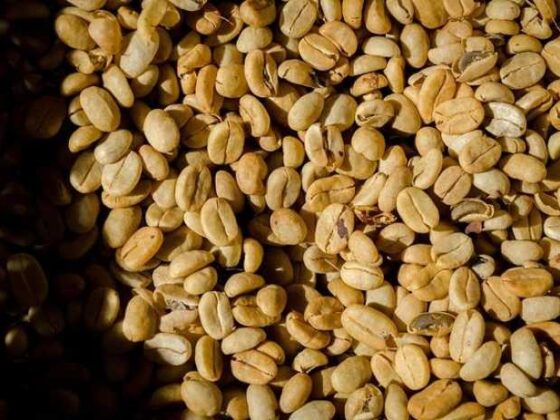Brewing Up Knowledge: Your Guide to Coffee Bean Plants
Hey there, coffee lovers! ☕️ If you’ve ever found yourself sipping on your daily brew and wondering where those magical coffee beans come from, you’re in for a treat! Coffee isn’t just a pick-me-up; it’s a whole world filled with fascinating plants, rich histories, and vibrant cultures. In this guide, we’ll dive deep into the mysterious life of coffee bean plants, exploring everything from their origins in lush tropical climates to how they transform into the flavorful drink we can’t live without. So grab that mug, get comfy, and let’s brew up some knowledge together!
Exploring the Coffee Bean plant Varieties You need to Know
When it comes to coffee, the variety of beans you choose can dramatically influence your brew’s flavor profile. The two most prominent types of coffee beans are Arabica and Robusta. Arabica beans are known for their sweet,fruity flavor and complex acidity,making them a favourite among specialty coffee lovers. In contrast, Robusta beans pack a punch with a stronger, more bitter taste and higher caffeine content, frequently enough found in instant coffees and espressos. These base types give rise to numerous cultivars, each with its unique characteristics, such as:
- Typica – Valued for its classic, balanced flavor.
- Burbon – Known for sweetness and rich body.
- Caturra – A natural mutation of Bourbon,bringing a crisp acidity.
Moreover, coffee cultivation varies across regions, which adds another layer to the flavors we experience in our cups. Terroir plays a crucial role, and coffee grown at different altitudes or in varying climates, such as those from Ethiopia or Colombia, will present distinct tasting notes. Below is a fast comparison of some popular coffee-growing regions and their hallmark flavor profiles:
| Region | Flavor Profile |
|---|---|
| Ethiopia | Floral,fruity,and complex |
| Colombia | Nutty with balanced acidity |
| brazil | Chocolatey and smooth |
| Vietnam | Earthy and bold |

Understanding the Growth Cycle: From Seed to Sip
The journey of a coffee bean begins with a humble seed, nestled in the warm earth. Once planted,the seed absorbs moisture and begins to germinate,sending a slender shoot upward. As the plant grows, it transitions through critical stages, requiring specific conditions to thrive. Key factors include:
- Temperature: Ideal ranges between 60°F and 70°F.
- Humidity: Optimal levels around 50-70% to achieve a healthy habitat.
- Soil Quality: Well-draining, nutrient-rich soil is essential for strong root advancement.
As the plant matures, it develops glossy, dark green leaves and eventually blossoms with stunning white flowers that emit a fragrance reminiscent of jasmine. Pollination follows, leading to the formation of coffee cherries. These cherries gradually ripen, changing from green to red. Once they reach peak ripeness, they are harvested, and the seeds (or beans) are extracted, processed, and dried, ready for roasting. Here’s a quick overview of the primary stages:
| Stage | Description | Duration |
|---|---|---|
| Germination | Seed absorbs water and begins to sprout. | 2-3 weeks |
| Seedling | Emerges from the soil and grows leaves. | 8-12 weeks |
| Mature Plant | Develops flowers that will later turn into cherries. | 3-4 years until the first harvest |
| Harvest | red cherries are picked and processed. | Ongoing, every 1-2 years depending on climate. |
Tips for Cultivating Your Own Coffee Beans at Home
If you’re dreaming of brewing coffee from your own beans,there are a few essential tips to kickstart your home coffee farm. First, select the right coffee variety for your environment. Arabica is usually easier to grow at home, while Robusta can be quite demanding but is often more resilient. Ensure you provide your plants with plenty of indirect sunlight—about 6 hours a day is ideal. Water your coffee plants regularly, but avoid overwatering; let the soil dry out a bit between waterings. Also, consider using organic fertilizer to give those little green beauties a nutrient boost!
Another critically important factor is to maintain proper humidity and temperature.Coffee plants thrive in conditions where the temperature stays between 60°F to 70°F (15°C to 24°C). A humid atmosphere helps in keeping your plants happy, so don’t hesitate to mist them or use a pebble tray. Pest control is crucial too; keep an eye out for common nuisances like aphids and spider mites. You can create a simple pest control solution by mixing mild soap with water. That’s right, your coffee journey could start from a tiny seed and bloom into a beatiful, fruitful adventure!
crafting the Perfect Brew: Techniques for Every Coffee Lover
For every coffee lover, the journey to the perfect cup starts with understanding the nuts and bolts of brewing techniques. Whether you’re using a French press, pour-over, or an espresso machine, each method offers a unique flavor profile that can elevate your coffee experience. Remember, the key to a great brew is consistency. Here are some tips to keep in mind:
- Water Temperature: Aim for 195°F to 205°F for optimal extraction.
- Grind Size: Coarser for French press, medium for drip, and fine for espresso.
- Brewing Time: Experiment with times; longer steeping can bring out more flavors.
Decoding the flavors in your cup can also be a fun adventure. Different coffee bean varieties have unique tasting notes and aromas, influenced by their growing conditions. As a notable example, beans grown at high altitudes tend to have acidity and radiant flavors, while those from lower altitudes might be smoother and sweeter. Use this simple table to get a grasp of the commonly used bean varieties and their characteristics:
| Bean Variety | Tasting Notes |
|---|---|
| Arabica | Sweet, with hints of fruit and sugar |
| Robusta | Bittersweet, earthy, with a strong body |
| Liberica | Floral, fruity, with a unique aroma |
Q&A
brewing Up knowledge: Your Guide to Coffee Bean plants Q&A
Q1: What’s the deal with coffee bean plants? Are they realy that interesting?
A: Absolutely! Coffee bean plants, specifically Coffea, are like the rock stars of the plant world. They’re not just about brewing that perfect cup; they have an entire lifecycle, fascinating growth habits, and a rich history that makes them super intriguing for any coffee lover.
Q2: how many types of coffee bean plants are there?
A: There are over 120 species of coffee plants, but the two big players are Arabica and Robusta. Arabica is known for its sweet, smooth flavor while Robusta packs a punch with a stronger taste and more caffeine. It’s like the Batman and Superman of coffee beans!
Q3: Where do coffee plants actually grow? Can I grow one at home?
A: Coffee plants love warm weather, typically thriving in tropical climates around the Equator. Think Brazil, Colombia, and Ethiopia. If you’re feeling adventurous and live in a warm area, you can totally grow one at home! Just make sure it’s potted, gets good drainage, and enjoys a bit of shade.
Q4: What’s the deal with the coffee cherry?
A: Oh, the coffee cherry! That’s where the magic begins. Once coffee beans are harvested, they’re found inside these bright red cherries. the cherries need to be processed quickly to get to the beans, and they’re actually sweet and tasty—perfect for snacking if you’re into that kind of thing!
Q5: How long does it take for a coffee plant to produce beans?
A: Patience is key, my freind! It usually takes about 3 to 4 years for a coffee plant to start producing fruit. After that,it can yield beans for about 20-30 years.So,if you’re getting into coffee gardening,you’ll want to plan for the long haul!
Q6: Any special care tips for coffee plants?
A: For sure! Coffee plants love humidity,so misting them can keep them happy. They also prefer slightly acidic soil, bright but indirect sunlight, and regular watering—don’t let them dry out, but avoid soggy soil. It’s like keeping a pet; just give them a little love, and they’ll thrive!
Q7: Why is it important to know about coffee plants?
A: Knowing about coffee plants enriches your appreciation for your daily brew. Understanding their origins, cultivation, and processes can totally transform your coffee-drinking experience from just “buzzing on caffeine” to celebrating every sip like a connoisseur!
Q8: Any last tips for budding coffee aficionados?
A: Definitely! Experiment with different roasts and brewing methods. Every little detail, from the type of bean to the grind size and brewing time, can change how your coffee tastes. So, get out there and start exploring the amazing world of coffee—it’s worth every drop!
Insights and Conclusions
And there you have it, coffee lovers! whether you’re a casual sipper or a full-on caffeine enthusiast, you now have the lowdown on coffee bean plants. from understanding how they grow to appreciating the meticulous process that gets those beans from farm to cup,it’s safe to say we’ve brewed up some serious knowledge here.
So, the next time you take that first glorious sip of your favorite brew, take a moment to appreciate all the hard work that went into those beans. Who knew your morning ritual could be packed with so much history and science?
Feeling inspired to get a bit more hands-on? Maybe it’s time to consider starting your own coffee plant journey. Whether you go for the indoor pot or planting a small garden, just know you’re joining a global community of passionate coffee lovers.Thanks for tagging along on this caffeinated adventure! Don’t forget to share your coffee stories or any brewing tips you’ve picked up along the way.Until next time, keep sipping, exploring, and enjoying everything that this amazing world of coffee has to offer! ☕️✨











